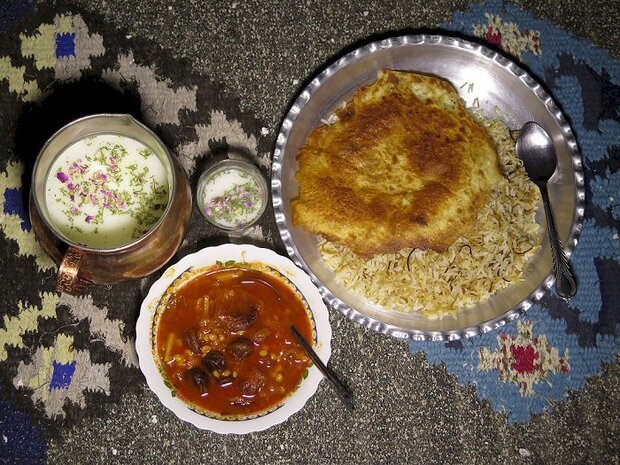Skills of making local foods, flatbread inscribed on national heritage list

TEHRAN – Five elements, traditionally practiced in Iran’s Zanjan province, have been inscribed on the National Intangible Cultural Heritage list.
The skills of making indigenous dolls, kilim carpets, flatbread, and local dishes are among the elements added to the significant list, CHTN reported on Saturday.
The Ministry of Cultural Heritage, Tourism, and Handicrafts declared the inscriptions in separate letters it submitted to the governor-general of the province, the report said.
Zanjan, the principal city of the Zanjan region and capital of Zanjan province, lies in an open valley about halfway along the Tehran–Tabriz railroad line.
Zanjan is a city founded by Sassanid King Ardashir I (180–242 CE).
It was once the seat of lively caravan trade and was ravaged by Mongolsthe Mongols in the 13th century.
The capital city of Zanjan makes a base for wider exploration with the architectural wonder of Soltaniyeh, the subterranean delights of the Katale-Khor caves, colorful mountains, and the UNESCO-registered Takht-e Soleiman ruins are nearby. Situated some 32 km southeast of Zanjan, Soltaniyyeh was once the capital of Il-Khanids (a Mongol dynasty).
It was founded in the early 14th century largely by Oljeitu (1304–16), who moved the capital there and whose magnificent mausoleum is practically the only remaining Il-Khan architecture.
Its dome, 168 feet (51 meters) high, rests on an octagonal brick structure and is decorated with blue faience (earthenware ceramic).
Furthermore, Zanjan is an agricultural hub with abundant harvest grain. Industries produce milled rice and flour, handwoven cloth, metalware, and coarse carpets.
17 Iranian elements registered in the UNESCO list
A selection of 17 Iranian elements has been registered in the UNESCO’s list of the Intangible Cultural Heritage of Humanity. Among Iran’s entries to the prestigious list are Radif of Iranian music; traditional skills of carpet weaving in Kashan; Music of the Bakhshis of Khorasan; Naqqali, Iranian dramatic story-telling; traditional skills of building and sailing Iranian Lenj boats in the Persian Gulf; and traditional skills of crafting and playing Dotar.
Furthermore, the ancient country seeks to register five intangible elements on UNESCO’s list of Intangible Cultural Heritage of Humanity in near future. They are ancient festivities of Mehregan and Yalda, crafting and playing [the stringed instrument of] the Oud, traditional craft of silk spinning, and Turkmen Duzi (a kind of traditional textile being practiced by Iranian Turkman tribes).
The Islamic Republic expects to reap a bonanza from its numerous tourist spots such as bazaars, museums, mosques, bridges, bathhouses, madrasas, mausoleums, churches, towers, and mansions, of which 26 are inscribed on the UNESCO World Heritage list.
AFM
